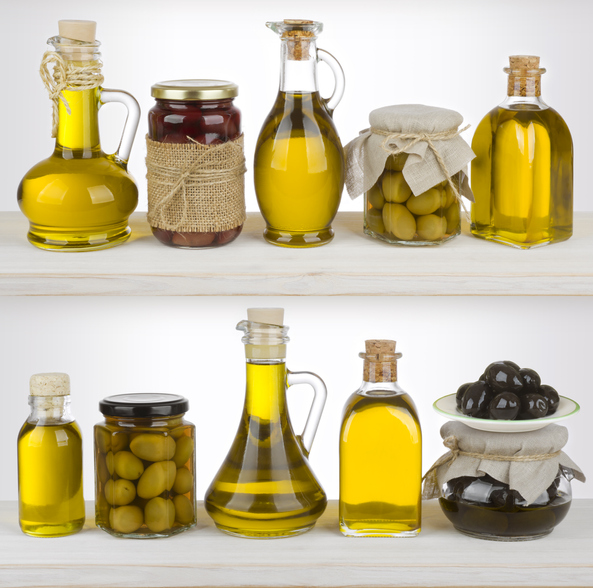As complex and rich as wine, olive oil has offered humanity the gifts of health and prosperity. Since ancient times, olive branches have symbolized peace, the leaves have crowned the heads of champions and the oil has anointed warriors and athletes. Olives are harvested around the world in the fall, so now is a good time to learn about the mighty olive’s nutritional benefits and when to use the different types of olive oils.
Polyphenols are the health superstars found in extra-virgin olive oil. “The higher the polyphenols, the better the olives are for you,” says Shauna Wells, owner of the Olive Oil Taproom in Henrico. The polyphenols help reduce the bad cholesterol (LDL) and raise your good cholesterol (HDL). Wells says extra-virgin olive oil should come in a dark bottle, have a strong aroma and taste like pepper in the back of your throat. The oil grabs your palate because polyphenols are still in the oil. The higher the polyphenol level, the more lingering the pepper and the greater the health benefits.
FYI: Today, the olive tree is cultivated in California, Mexico, Peru, Chile and Argentina. About 800 million olive trees can be found throughout the world.
In addition to heart-protective benefits, olive oil provides all the natural flavors, vitamins, minerals, antioxidants of the ripe olive fruit. In fact, most doctors advocate lowering total fat and calories in your diet, and substituting butter, margarine and tropical oils with healthy fats like olive oil.
Olive oil has many uses in cooking, too. Think of it as you would wine, and use different oils for different purposes. Robust extra-virgin olive oils add flavor to fish and meat and are great for making marinades. Wells, who frequently offers tastings to introduce her customers to different varieties and flavors, says a medium-intensity extra-virgin olive oil works perfectly on mozzarella, for bread dipping, in vinaigrette or sprinkled on steamed vegetables or baked potatoes. All-natural organic butter olive oil is infused with the rich flavor of butter and makes an excellent butter substitute, great for cooking with crab or shrimp, for dipping bread or to flavor pasta, mashed potatoes or rice. This type of olive oil is also good for baking. Wells recommends organic basil infused oil, which has a delectable tomato flavor, for use on summer salads or caprese. Use mellow, late harvest versions in baking or to make mayonnaise. Olive oil or virgin types are good for frying and sautéing. Finally, take care to not use excessive heat, since this will cause it to lose its taste and fragrance. Use a less expensive choices for frying, while adding more flavorful oil after cooking or at the table for dipping or dressing. Finally, keep in mind that a tablespoon of olive oil has almost 120 calories.
Perhaps olive oil really is ‘liquid gold.’ With just a drizzle of extra-virgin olive oil, you’re on your way to a healthier way of life.
TYPES OF OLIVE OIL :
or hazelnut.

